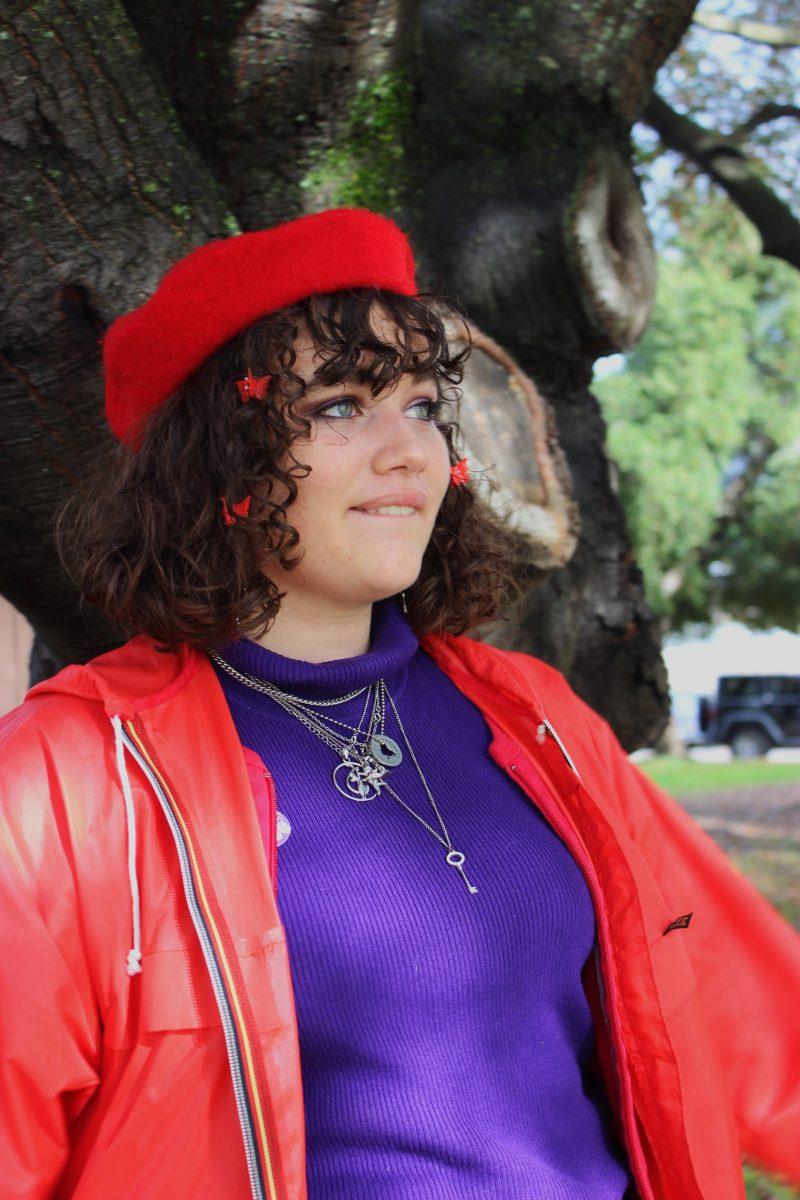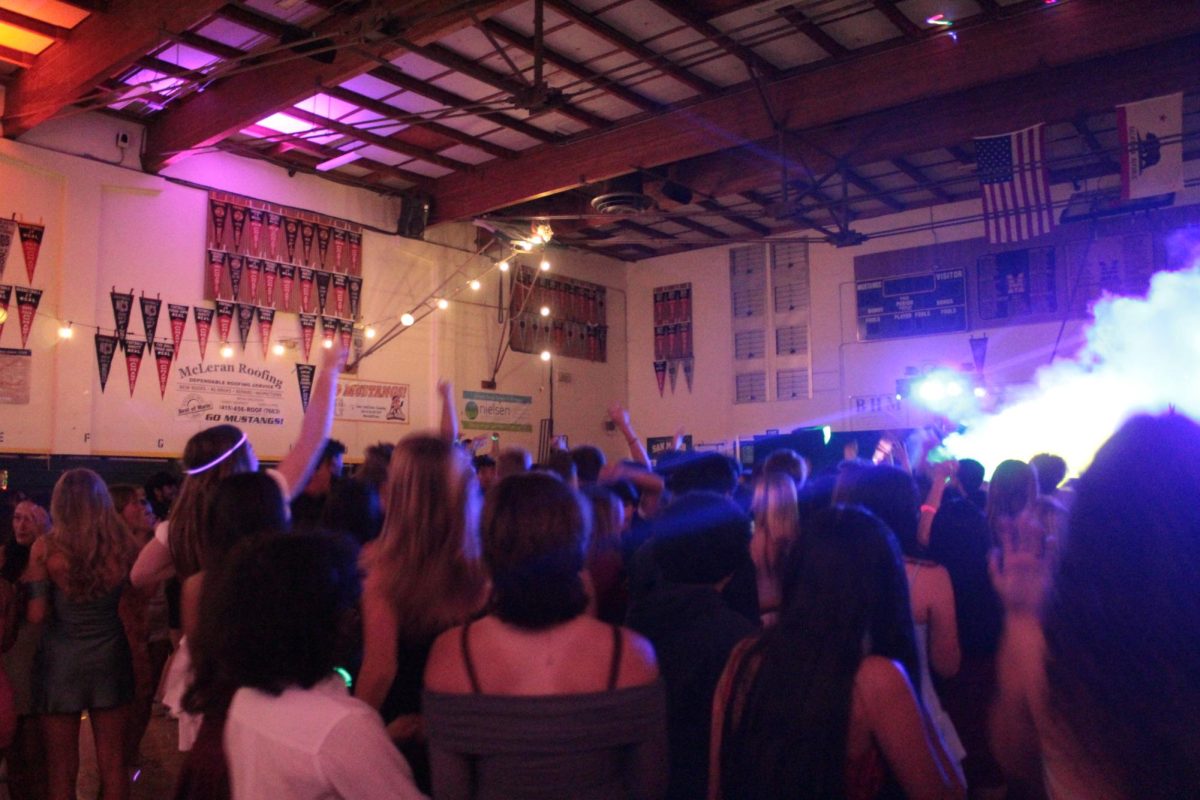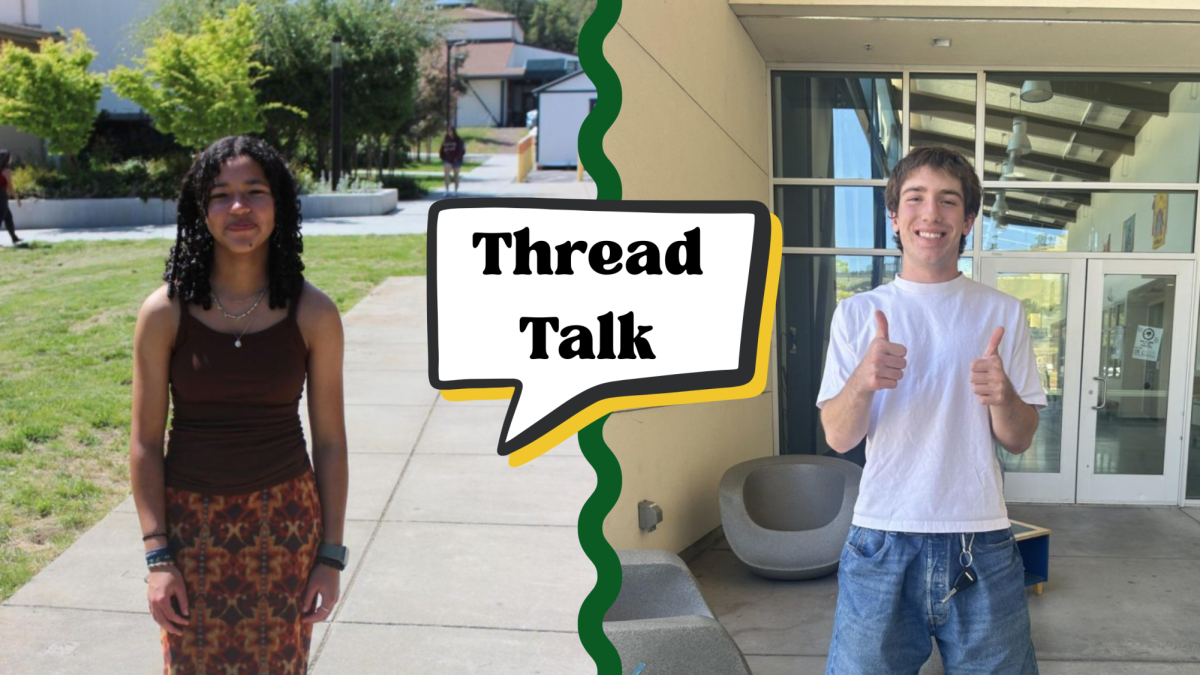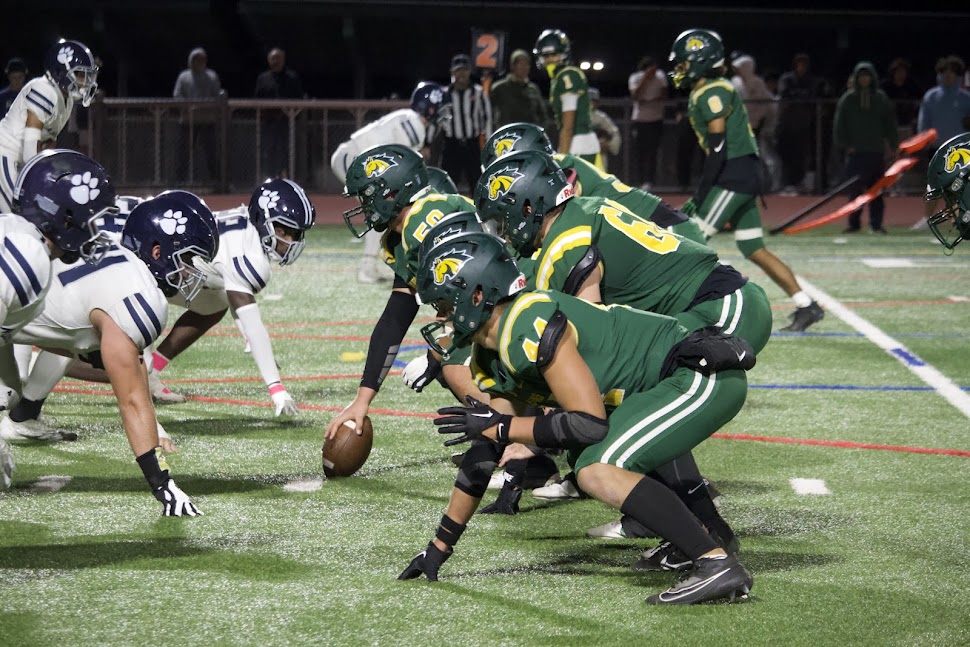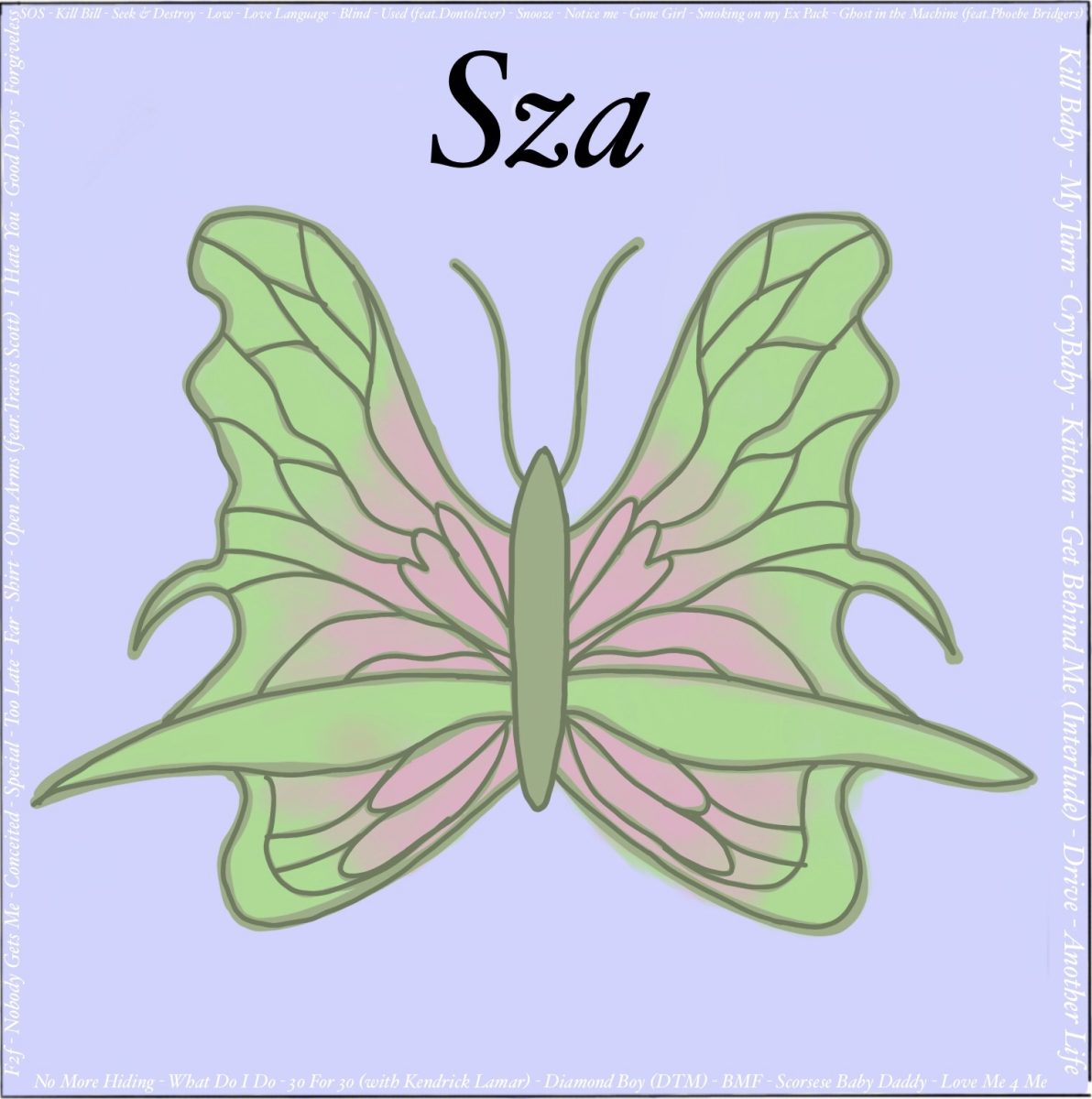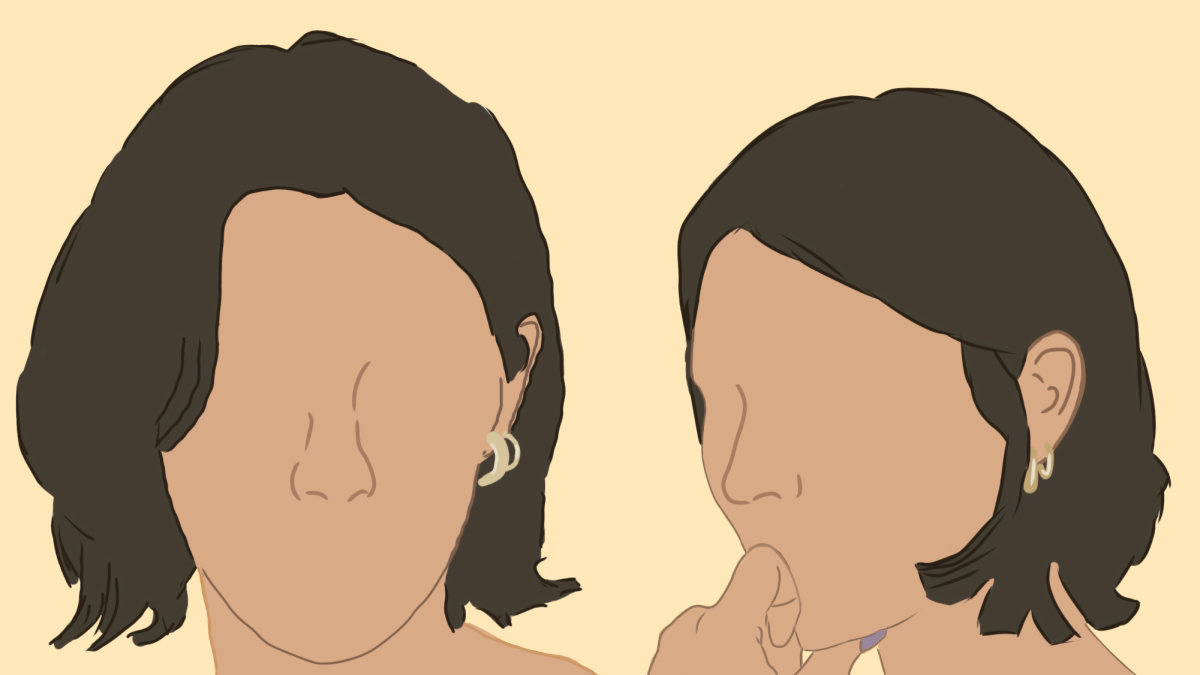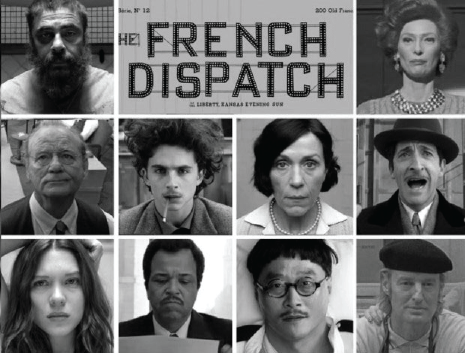
film. The movie was released in select theaters in the US on
October 22, 2021.
The Darjeeling Limited, The Life Aquatic, Moonrise Kingdom, The Grand Budapest Hotel, and now The French Dispatch. Wes Anderson is known for his aesthetic style that can be recognized anywhere. This comes from the potent use of color and oversaturaturation in his most recent works. However, in his most recent movie, The French Dispatch, we follow a completely different style, neo-noir. The French Dispatch is not a children’s movie, it is not a light hearted film, and it is not a typical Wes Anderson movie. It is stylistic, dazzling, emotional, and leaves no breathing room for interpretation or reflection as the film is moving. The movie’s centerpiece is the death of a prominent Editor-in-Chief, Arthur Howitzer Jr. (Bill Murray), who ran the magazine, The French Dispatch. The story crafted in The French Dispatch is from his eulogy, which reveals his character, and more importantly, how he interacted with his staff. In the beginning of the film, the dispatch is under a bit of money trouble, but Howitzer decides no one will be cut from his next issue. The French Dispatch doesn’t follow these specific characters or Howitzer Jr. ‘s story but rather tells the story of each writer’s work as we “read” the magazine.
As the movie progresses, the audience moves to a different section of the paper. The first story, The Concrete Masterpiece, focuses on Moses Rosenthaler (Benicio Del Toro), a tormented artist who finds his artistic genius serving a life sentence for double homicide where he finds his muse, Simone (Léa Seydoux), a prison guard at his penitentiary. The second, Revisions to a Manifesto, centers on the 1968 student protests in Paris, France as the audience follows the journalist writing the story, Lucinda Krementz (Frances McDormand), as she journalistically ‘interacts’ with Zeffirelli (Timothée Chalamet), a moody student revolutionary. The third and final story, The Private Dining Room of the Police Commissioner, pays its homage to a Chef who is alluded to during a masterfully crafted story about a police department commissioner’s son’s kidnapping and how the events unfolded from the journalist’s (Jeffrey Wright) point of view.
Each story we are told from the magazine is integrated with the use of color as its focal point. The movie uses the neo-noir style to depict the past and the future as the story jumps timelines from the perspective of the journalist writing the story to the story itself. Whenever the story is happening it is shown in noir and only switches to color in order to convey a certain camera angle and/or subject to be important. For example, the finished paintings are shown in color to emphasize the paintings’ timeless nature in the first story. The absence of color for long periods of time as you watch the movie makes each switch to color more predominant and emotional as the audience knows, we are supposed to view this particular instance as significant.
What’s truly amazing about The French Dispatch is that each story became my favorite as the movie progressed, and each story connects with the audience, with themes of love and loss in each reporter’s story.







